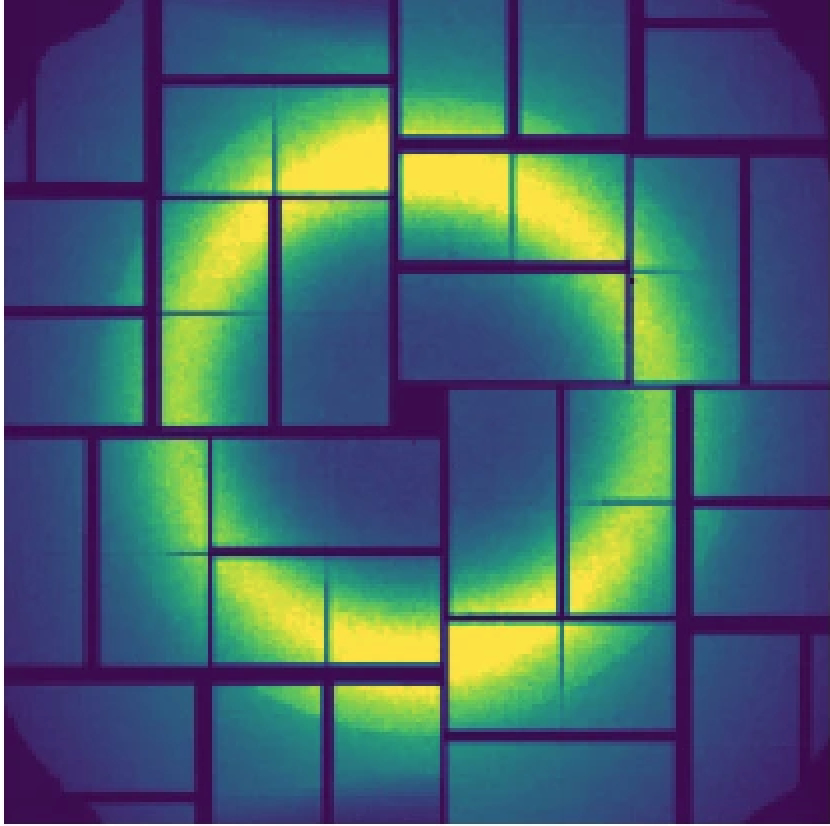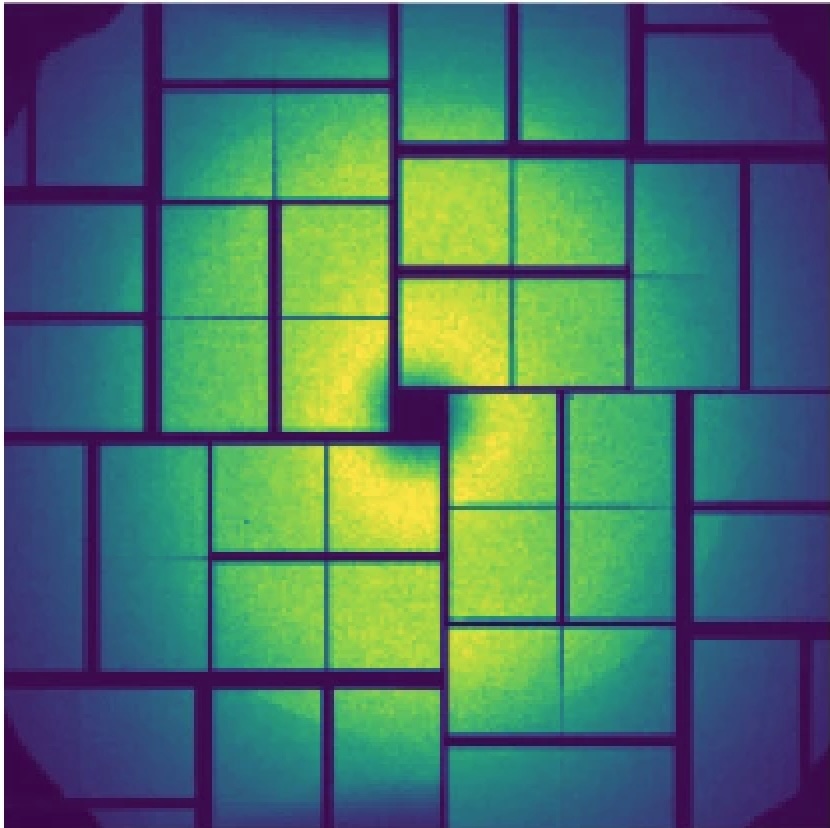💥 X-ray damage creates new structure in water?
Published:
What happens when you blast water with a femtosecond burst of intense X-rays from a FEL?
Expected: the intense electric field rips electrons away from their nuclei, causing ionization. Those ejected electrons go on to impact other atoms in their vicinity, inducing a secondary ionization cascade.
Less expected: at very short timescales, around 100 fs, this ionization generates new order. Yes, surprisingly, the X-rays might not be totally destructive.
We observed this phenomenon during X-ray pump / X-ray probe experiments at the LCLS https://lcls.slac.stanford.edu/) that were originally planned to study XFEL damage to protein crystals. To do this, we generated two pulses from the LCLS, a pump (to damage the crystals) and a time-delayed probe (to see what happened). We also tuned the pump energy such that it was just above the iron K-edge. The probe was set just below the same edge. This way, an iron foil placed just after the sample but before the detector effectively filters out any pump diffraction, while transmitting the probe X-rays efficiently. Neat. Here’s a sketch (thanks to Ilme Schlichting):

During these experiments on proteins, the team washed the crystal injector system frequently with water. This keeps the pipes clean, preventing the buildup of a mess of protein crystals that can cause the system to clog. During these washes, we kept the FEL running… why not? Turning things on and off is a recipe for instability and lost experiment time.
What we didn’t expect was that during some of these washes, for example with 100 fs pump-probe delay, the water diffraction pattern seemed to change! It went from the normal one, with a ring corresponding to the solvation-shell ordering in the water sample:

to this:

The central, low-angle ring is striking. That peak in diffraction at lower angles indicates there is a new structure in the water with a longer characteristic distance than the solvation shells in normal liquid water. We found this new structure appears over time and appears more quickly and at greater amplitude with increasing pump power.
The team of Beata Ziaja-Motyka conducted simulations to try and capture the microscopic origins of the observed diffraction. These simulations show we generate a state known as warm dense matter, roughly intermediate between a condensed phase and a plasma. Lots of strange and poorly understood phenomena occur in WDM, and our observation is a new item on the list in that regard. The simulations show that our intensely focused X-ray beam almost certainly blasts all the electrons off the sample that is inside the most intense part of the beam, but that matter illuminated by the beam “wings” could diffract, and in these beam wings we expect to have formed a significant concentration of oxygen ions with 2+ and 3+ charges. All that said, the simulations themselves are too simple to directly explain the diffraction we observe – they lack chemical effects, including covalent and hydrogen bonding, of fundamental importance to explain our observation.
The microscopic picture underpinning our observation is therefore still up for debate! What causes some ionized water to form a new, longer-range structure? The best idea we have so far comes from Anders Nilsson, who suggested that the diffraction we observe is strongly reminiscent of the wide-angle scattering generated by concentrated solutions of divalent and trivalent cations, such as Mg2+ and Al3+. Such structures are generated by interactions between the solvation shells of these ions, which – due to the strong fields induced by the ions – are more strongly ordered and long-range than typical solvation shells.
His theory is that we generate divalent and trivalent oxygen cations, which are then rapidly solvated by the surrounding water, producing this characteristic diffraction pattern. Our observed changes take place extremely quickly (<100 fs), and how such reordering could occur in such a short time remains a big question mark. Anders’ theory explains all the data we have to date but needs to be put to the test with additional experiments and calculations. It’s not the only possibility; we need bright minds on the case to try and explain what’s going on and see if we can get a deeper insight into yet another curveball sent our way by water, the most important – and, perhaps, also the most intriguing – liquid on Earth.
Read all the details in our paper, out in Communications Physics.
